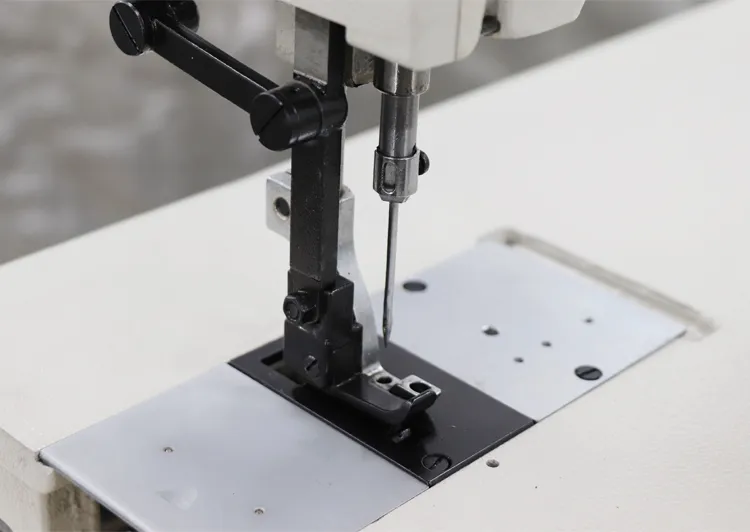sail making machine
The Art and Technology of Sail Making Machines
Sail making is an ancient craft that has evolved significantly over the years, driven by the dual forces of tradition and innovation. At the heart of modern sail making lies a remarkable piece of machinery known as the sail making machine. These machines have revolutionized the way sails are designed, cut, and assembled, making the process faster, more efficient, and precise. This article delves into the intricacies of sail making machines, their history, how they function, and their impact on the sailing industry.
A Brief History of Sail Making
The earliest sails were made from animal skins and natural fibers, which were hand-sewn together with rudimentary tools. As maritime travel expanded, so did the need for more durable and efficient sails. By the 19th century, sail making began to incorporate more advanced materials like cotton canvas and later, synthetic fibers like Dacron. The advent of the Industrial Revolution brought forth mechanization, which changed the landscape of many industries, including sail making.
Evolution of Sail Making Machines
The first sail making machines were basic sewing machines adapted to handle heavy fabrics. Over time, specialized machines have been designed to meet the unique demands of the sail making process. This evolution has seen the introduction of various types of machines, including cutting machines, sewing machines, and finishing machines, each playing a vital role in the creation of sails.
Modern sail making machines are capable of handling multiple tasks, such as cutting patterns with precision, sewing seams efficiently, and applying reinforcements to ensure durability. Some machines are even equipped with computer programs that allow for intricate designs and automated processes, reducing the potential for human error and significantly speeding up production.
How Sail Making Machines Work
Sail making machines utilize advanced technology to streamline the entire process. Computer numerical control (CNC) machines are commonly used for cutting fabric. These machines can produce complex shapes and patterns with a high degree of accuracy. The process begins with a digital design, which is input into the CNC machine. The machine then uses a series of blades or lasers to cut the fabric according to the specified dimensions.
sail making machine

Once the sails are cut, heavy-duty sewing machines take over the assembly process. These machines are designed to handle thick materials and multiple layers, stitching them together with robustness that can withstand the harsh marine environment. Some sewing machines come with features like walking feet, which help to move heavy fabrics through the machine smoothly.
In addition to cutting and sewing, finishing machines play a critical role in preparing the sails for use. These machines are responsible for adding reinforcements, such as corner patches and bolt ropes, which are crucial for the sail's structural integrity. Some finishing machines also apply treatments to the fabric, such as waterproofing or UV protection, enhancing the sail's lifespan under tough conditions.
The Impact of Sail Making Machines on the Industry
The introduction of sail making machines has had a profound impact on the sailing industry. Firstly, the speed of production has drastically increased. Sail manufacturers can now produce sails in a fraction of the time it took with manual processes, allowing for quicker turnaround for customers.
Secondly, the precision achieved through automated cutting and sewing leads to better-fitting sails, enhancing performance on the water. Well-designed sails improve a boat's handling and speed, contributing to a better sailing experience.
Moreover, the standardized processes enabled by these machines have led to greater consistency in quality. Sail makers can produce sails that meet specific standards, ensuring that they perform reliably across various conditions.
Conclusion
Sail making machines represent a harmonious blend of art and technology in the world of sailing. As sailing continues to evolve, these machines will play an increasingly important role in shaping the future of the industry. They not only enhance production capabilities but also ensure that the traditional craft of sail making is preserved and adapted to meet contemporary demands. By embracing innovation while respecting the timeless skills of the past, sail makers can sail confidently into the future.
-
Industrial Cylinder Arm Sewing Machine: Revolutionizing Heavy-Duty SewingNewsJul.28,2025
-
Cylinder Arm Sewing Machine: Perfect for Special Sewing ApplicationsNewsJul.28,2025
-
Cylinder Bed Sewing Machine: Essential for Sewing Complex MaterialsNewsJul.28,2025
-
Heavy Duty Sewing Machine: The Essential Tool for Industrial ApplicationsNewsJul.28,2025
-
Computerized Pattern Sewing Machine: Revolutionizing Precision StitchingNewsJul.28,2025
-
Heavy Duty Industrial Sewing Machine: Power Meets PrecisionNewsJul.28,2025
-
Leather Sewing Machine: The Industrial Standard for Tough MaterialsNewsJul.18,2025





























